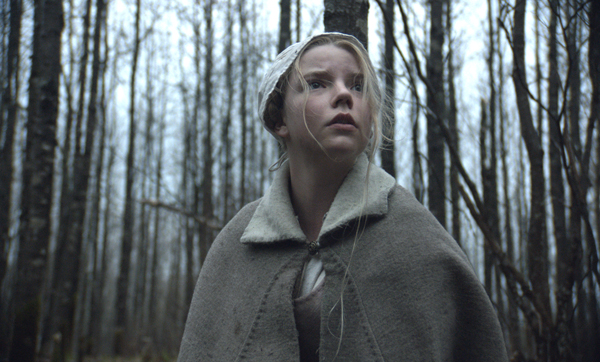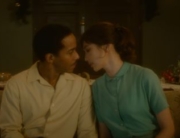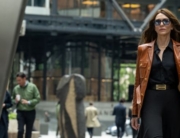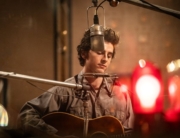The woods: few phrases conjure up scares so visceral. This portrait of a Puritan family confronted with witchcraft is ultimately about our most fundamental fears: the dark, the unknown, and, of course, one another.
Believing that their settlement’s way of practicing their faith is too liberal, a family of six—husband William, wife Katherine, eldest daughter Thomasin, son Caleb, twins Mercy and Jonah, and infant Samuel—decide to strike out on their own after having come over from England to the New World. Feelings of unease are evoked well before anything supernatural enters the scene: shots of the broad expanse of wilderness dwarfing the solitary family are chilling. (No plucky pioneers-in-training greeting the great unknown with smiles and can-do attitudes here.)
It’s clear that even more sinister forces are at work. While Thomasin (deftly portrayed by Anya Taylor-Joy) plays peekaboo with Samuel one day, she uncovers her eyes to discover the baby has disappeared. Though the family members debate whether there’s a rational explanation (could a wolf have taken the child?), viewers—but not the family—quickly learn the truth. Strange events happen, and slowly, the family is torn apart, suspiciously looking to what lies beyond the woods, and to one another. At moments, the film feels like a mash-up of The Crucible and The Village.
Some viewers may come away frustrated. Unlike The Village, there’s no pat ending, and it isn’t obvious what the takeaway message is, yet filmmaker Robert Eggers excels at tone and mood. The score is unnervingly effective, and tracking shots that follow characters closely will have audiences wondering what’s lurking beyond the frame. Dialogue is spare, matching the grim, spartan mood, yet throughout themes emerge. Eggers also emphasizes an almost obsessive passion for religion and morality that contrasts sharply with the forces of witchcraft and devilry that are, supposedly, at work. And when it comes to showing the horror, Eggers pulls back the curtain back just enough to raise goose bumps without showing too much. The imagery is suitably grotesque, yet Eggers never overdoes it.
The writer/director also picks apart the tension within the family that is only exacerbated after Samuel’s disappearance. Katherine nurses myriad regrets and turns her anger toward her eldest daughter, blaming her for the loss of the child. Both parents worry about how they will last through the winter, and, above it all, fear of female sexuality permeates: Caleb’s lingering glances at his sister’s developing body hint at dangers to come.
Taylor-Joy’s performance is, well, bewitching. The bizarre happenings almost always seem to involve Thomasin, and viewers will wrestle internally: Is she someone we can trust? Blonde and large-eyed, Taylor-Joy suggests an innocent presence, yet in at least once scene, she jokes to Mercy that yes, she’s the witch that’s been plaguing the family. (Or is it really a joke? Her commanding, and even frightening, attitude suggests something more macabre.)
So what is The Witch about, beyond a solid 92 minutes of tension? There’s some ambiguity here, and some audience members may emerge wondering what, beyond the feelings of fear and terror, the overall message is. Is it an exploration of why we fear what we do, of how our history has affected us? (The film concludes with text stating that the script was based on actual recorded accounts of witchcraft.) Or is it merely a look into the darkness? While not everyone will be satisfied, this is a powerful and disturbing work that will linger, perhaps uncomfortably so, with viewers.







Leave A Comment